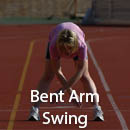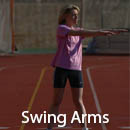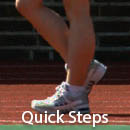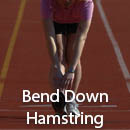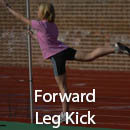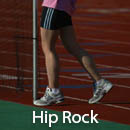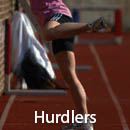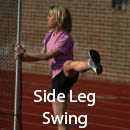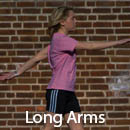Warming Up
Introduction
One of the greatest myths of exercise is that stretching is required beforehand. Never stretch a cold muscle. Cold muscles are tight and easy to strain. Do not interpret this to mean never stretch. Instead, learn to stretch at the proper time.
All workouts start by warming up. Stretching does not warm you up. While you could walk slowly to get the blood pumping, instead perform many of the dynamic drills presented in this section. These drills get the blood flowing, warm up the muscles, and increase your range of motion. Repeated practice of these drills prevents injuries and improves your race walking technique.
While practicing all of the drills every day is ideal, it’s not likely that your schedule permits that much time to warm up. Each drill specifies a purpose, importance, and intensity. The purpose of the drill assists you in selecting the proper drill for the area of the body in which you wish to increase the range of motion or warm up. The importance indicates, in my humble opinion, the relative merit in performing the drill. The intensity indicates the force that the drill requires.
Some drills are safe for all walkers to perform. Others may not be ideally suited for all walkers. These will be indicated with a coach’s warning, indicating that walkers with particular physiological problems may choose to skip this drill.
After properly warming up using these drills, stretch any problem areas. Warmed up and stretched, you are ready to race walk. Once you finish race walking, then you must stretch and stretch well. Stretching is detailed here.

